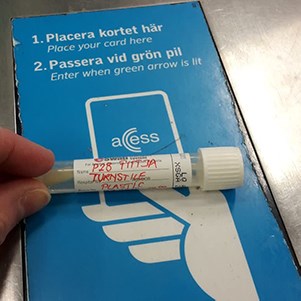Contact
Department of Aquatic Sciences and Assessment, Division of Microbial Ecology

While the viral cause of the current coronavirus pandemic, SARS-CoV-2, is thought to be transmitted primarily through aerosols, indirect contacts may mediate transmission via surface-bound virus. The aim of this project is to assess transmission through surfaces in subway and hospital environments, as well as to monitor SARS-CoV-2 (and associated pathogens) in aerosols in hospital.
It has been reported that surface persistence of these RNA viruses can exceed five days in lieu of adequate disinfection. It is thus impossible to exclude fomite-based transmission especially in highly trafficked areas and hospital milieus. It is furthermore critical to control adequately any and all surveillance studies with earlier baseline values.
This project makes use of > 500 subway station surface swab samples collected in different locations and seasons for sequence-based viral profiling (including assessment of SARS-CoV-2). The sampling, sequencing and analysis methodologies we had developed are standardized and state of the art.
The project is part of the SciLifeLab COVID Environmental Research Area and the MetaSUB consortium which is an international consortium of scientists studying the surface-derived microbiome of the world subway systems in 75 different countries. As coordinator of the sample collection and preparation in Europe and Africa for MetaSUB, we earlier developed a strong relationship with Region Stockholm while sampling longitudinally in the subway system over three years. In addition to surfaces, we also studied the air of select subway stations.
During the COVID pandemic, we are applying our expertise to assess the air and surfaces in several hospitals, including Uppsala University’s teaching hospital. Using a novel electrostatic sampling device, we track SARS-CoV-2 (and associated pathogens) in aerosols, in addition to swabbing surfaces, and sampling hospital wastewater to determine pathogen levels patients and hospital staff are exposed to.
Dr Klas Udekwu.
Chris Mason (Cornell Medicine), Howie Weiss (Penn State), Antonio Rothfuchs (KI), Erik Salaneck (UU), Josef Järhult (UU).
SciLifeLab and The Knut and Alice Wallenberg Foundation (2020-2022).